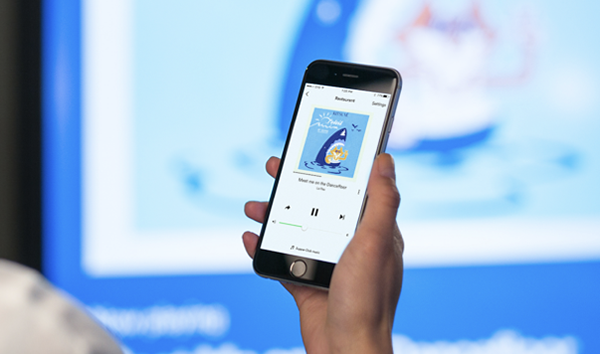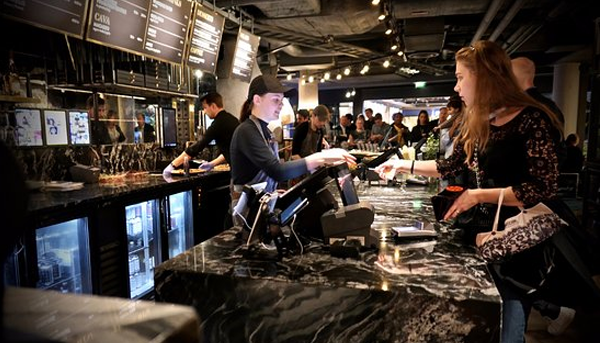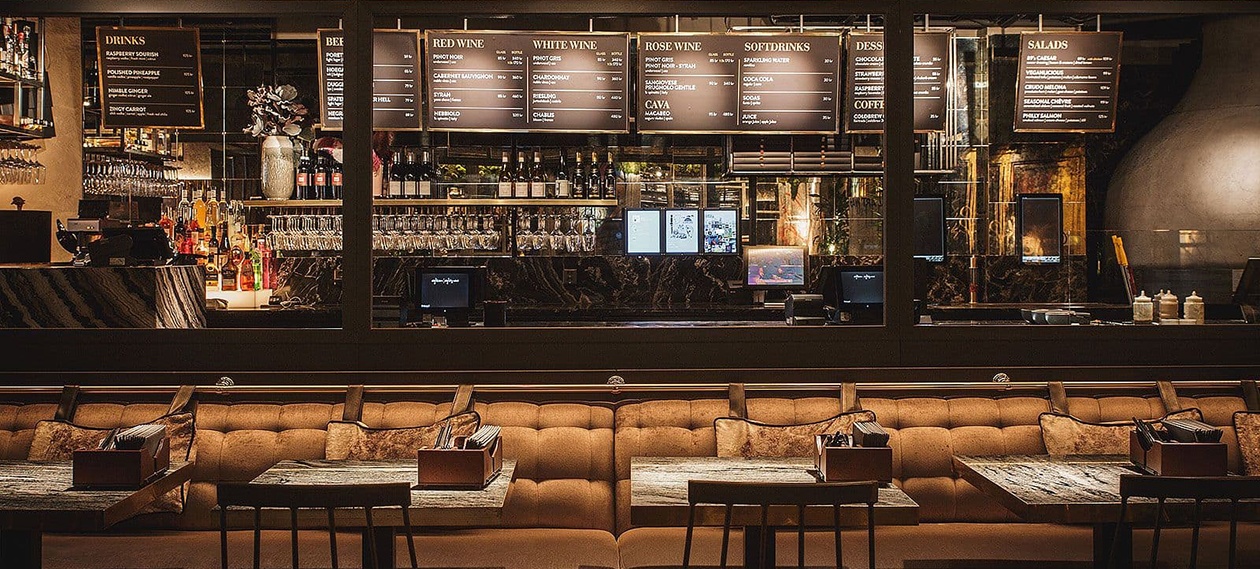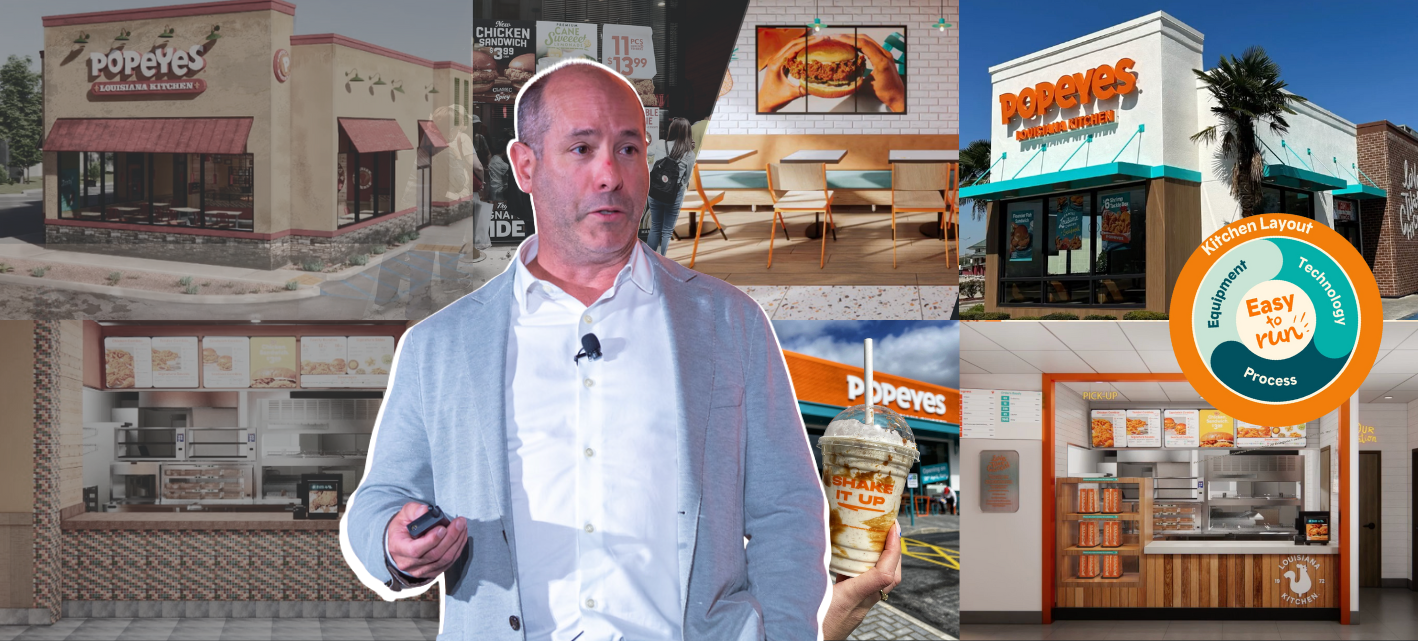Understandably, this week’s launch of Amazon Go sent ripples of excitement and trepidation throughout the retail world.
While industry and consumers alike imagine a potential future free from lines and checkouts, one design team has been quietly working with similar technology for close to a year, albeit in a different industry.
At first glance, Livit’s 18|89 may seem like just another upscale pizza concept. However, beneath the facade it is, first and foremost, a testing ground for the world’s largest restaurant design firm. As soon as guests walk through the door, their closely-monitored behavior helps create the future of experience dining.
Much in the same way Amazon Go’s “Just Walk Out” technology can track customers throughout the store, 1889 uses an impressive display of Internet of Things (IoT) and artificial intelligence (AI) capability to power its innovation efforts.

“What we have in Stockholm is the restaurant equivalent of the Amazon Go experience.”
Ahead of his talk at RestaurantSpaces in February, Livit CEO Benjamin Calleja took some time out with us to explain exactly what they’re trying to achieve.
“1889 is packed with all kinds of sensors — heat mapping, WiFi, beacons, and Bluetooth devices. We know exactly where people sit, for how long and where they move in the store,” he said. “Everyday, we carry out research and focus groups to better understand what drives customer behavior and how we can use those insights to make a restaurant more profitable.”
Playing to a new Tune
Strategically situated in Sweden’s startup haven, the restaurant benefits from partnerships with neighboring tech companies. Capitalizing on this wealth of expertise, 1889 is helping Livit use big data and machine learning to propel the industry forward.
“The problem is that everyone’s collecting data. Tons of data. But no one really knows what to do with it,” Calleja said. “It’s impossible for a human brain to process the amount of data we’re currently gathering.”
Through rigorous experimentation across its first eight months in operation, Livit has found unique ways of utilizing this endless stream of information to create fully automated processes that enhance the customer experience.
A prime example can be seen in the company’s collaboration with Spotify-backed Soundtrack Your Brand, which is using 1889 to test how music affects diners. The data revealed playing upbeat songs familiar to customers at a higher volume, makes them more aware of the time, causing them to leave earlier.
“This is optimal for peak periods when your objective is greater throughput,” Calleja explained. “On the other hand, during non-peak hours, you want to keep your restaurant as full as possible to increase the likelihood of add-on products like desserts, which have a high margin. That’s when we play unfamiliar music, at a slower tempo and lower volume, enticing customers to stay.”
Coupling this information with carefully crafted algorithms, the restaurant’s built-in AI uses real-time customer numbers (determined by how many mobile devices are in the restaurant at any given time) to automatically adjust the volume every 15 seconds.
“In this way, a restaurant could still pre-schedule when it wants to play certain kinds of music. But with the added assistance of technology, you can always guarantee the right energy and the right vibe, regardless of the time of the day and the number of guests,” Calleja said.

Scent Screening
Perhaps one of the most interesting innovations being tested at 1889 involves stimulation of a different sense — namely, a customer’s sense of smell.
Thanks to specialized WiFi devices dispersed throughout the restaurant, certain scents can be pumped into the space, subliminally encouraging customers to choose particular menu items.
“When we changed the scent in the restaurant to one that’s infused with fresh basil, our salad sales went up 13 points."
“This would be useful on a warm day in Spring” Calleja mused. “It might be a payday, people are outside enjoying the weather and they’re in the mood for salads. We could program the AI system to automatically produce that basil scent during these times because we know it will increase salad consumption.”
Using this technology alongside automated, intelligent menu screens would also allow a restaurant’s AI to match the scent with appropriate images and social media promotions. In this way, Calleja suggests, chains can take a “multi-sensorial approach” to driving sales.
The Future is Now
While the advent of such automation will be a huge windfall for customer experience innovation, it’s just as revolutionary from an operations standpoint.
For instance, data from the kitchen might trigger in-house AI to promote a certain menu item in the hope it will clear an ingredient rapidly reaching its expiration date. Such initiatives not only prevent waste, lower costs and improve efficiency, they also allow employees greater freedom to focus on what matters most.

Livit uses heat mapping, WiFi, beacons, and Bluetooth devices to monitor customer behavior in restaurants.
“The biggest change is that a lot of mundane processes currently owned by restaurant managers can be automatically handled by AI. Not having to worry about issues around staffing or how the restaurant needs to be set up on a certain day means they’re able to spend quality time with guests,” Calleja said.
Such capabilities may seem too lofty and outlandish to be taken seriously. However, Livit stands by its research, confident an industry evolution is already happening.
“What we’re learning today seems like a distant future. But these innovations will be a reality in many restaurants within a year or two,” Calleja assured.
A Seamless Switch
What these advancements also represent is a shift toward non-invasive technology. Calleja believes concepts are now beginning to move away from a tendency to implement devices that prevent connection with customers.
“Companies shouldn’t invest in hardware like kiosks or tabletop devices, as they get in between the brand and the guest.
“Most of the things we’re trying happen without the customer really noticing. That’s when it becomes frictionless.”
Indeed, creating a frictionless, Amazon-esque experience isn’t just a pipedream for Livit, but rather, something 1889 is already more than capable of.
“In our tests, when you walk into the restaurant we recognize you straight away. We see what you normally order and can upsell you. You’re able to pay without having to pull your phone out of your pocket. You don’t have to do anything. If you want to talk to a person, you still can, but if you just want to grab and go, you can do that too. It’s completely seamless,” Calleja beamed.

The Time is Now
While Amazon Go is evidence of the great inroads retail has been able to make with technology, 1889 is the food industry’s own indication it’s ready for its own shakeup.
“The experiential part of dining out is the future,” Calleja asserted. “Companies need to be able to connect with their guests on an emotional level and take them on a journey.”
Though he warned the only way brands can begin to achieve this is by investing more than just their dollars, instead aiming to take greater risks than ever before.
“I encourage brands to be a little braver and to go out there and try new things, because the only way of moving forward is failing and learning, constantly.”

Posted by
Chain Restaurants Reimagined.
The Retreat to Reimagine Restaurant Development, Design + Technology.
April 12-14, 2026 | Miami, FL





-3.png)
-4.png)
-3.png)



Comments